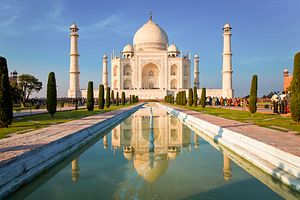At a recent business conclave in Mumbai in the context of the “Make in India Week,” CNN’s famed foreign affairs commentator Fareed Zakaria made an innocuous suggestion to India’s Finance Minister Arun Jaitley during the course of an interview. “Another area of job creation which strikes me,” said Zakaria, “is not quite ‘Make in India’ but ‘Visit India.’ ” Citing the example of Dubai, which has generated considerable wealth by promoting tourism, Zakaria proposed that if India could boost tourist inflow somehow, it could create a host of low-skill opportunities in the hospitality sector and beyond.
The comment is unlikely to garner as much attention as Zakaria’s other questions to Jaitley regarding India’s tax reforms and its upcoming budget announcement. But tourism is a highly understated and much neglected trump card for India’s economy, particularly given the spread of Indian cultural elements around the world in recent years. From Bollywood and cricket, to yoga and festivals such as Holi and Diwali, contemporary Indian culture has made its mark in different parts of the world, in large part due to India’s widespread diaspora. While Hollywood movies once depicted India as a land of snake charmers and fakirs, India is now known for having a vibrant culture made richer by the country’s tremendous diversity.
Yet, the numbers in the tourism industry are underwhelming. According to the World Bank, in 2013, fewer than 7 million foreign tourists arrived on India’s shores – far less than the number of tourists who visited much smaller countries such as Denmark and Bahrain, and even below tourist arrivals in cities such as Dubai and Singapore. By contrast, China attracted a whopping 55 million tourists that year while France topped the world rankings with 85 million tourist arrivals.
There are a great many reasons for India’s poor showing. Take infrastructure. India boasts as many as 32 World Heritage Sites and two Biodiversity Hotspots, but connectivity to many of these areas is still underdeveloped. Transportation is made cumbersome by a network of roads that are badly in need of repair. Trains too are in need of upgrading and better maintenance, and waterways remain a highly neglected mode of transport despite India’s abundance of rivers. Many cities are also now severely overcrowded. Bangalore, once named India’s “Garden City,” has now become infamous for its disappearing green spaces and has lost more than 60 of its most pristine lakes in the last few decades.
Some of these issues have been taken up by the Indian government. In his last budget, Jaitley announced a “National Investment and Infrastructure Fund” with Rs 200 billion ($2.9 billion) for infrastructure development as well as tax-free bonds for projects in roadways and railways. Additional measures are expected in the upcoming budget. To tackle the need for better urban planning and development, Prime Minister Narendra Modi unveiled the “Smart Cities” project, which will bring better civic amenities, infrastructure and governance to 100 cities across India.
But more needs to be done, and workable models are already in place in many parts of the world. While expanding its railway network, India must also consider running semi-luxury tourist trains to select tourist hotspots and scenic landscapes, much like tourist rail lines in countries such as Switzerland. Initiatives and campaigns such as “Smart Cities” and “Clean India” also have to be backed up with a revamp of India’s underperforming municipality system and the creation of lines to address issues in the nation’s cities. Meanwhile, better management of India’s loss-making national carrier Air India could bring with it not just more public funds, but also more foreign tourists, as the experience of airlines in the Gulf has shown.
Finally, India must tie up with its South Asian neighbors in order to integrate the region into one large tourism market. Countries such as Sri Lanka, Nepal, Bhutan and the Maldives are already tourist hotspots and would stand to benefit greatly if India were to spearhead the launch of a common tourist visa on some scale. This would also help boost tourist arrivals into India by offering foreign tourists a package deal of multiple countries. (That is part of why Switzerland and Sweden decided to join the Schengen zone, despite staying out of the EU). Just as importantly, the initiative would help India nurture better relations among neighbors in a region noted for its perennial infighting.
India has long neglected the potential of tourism in its economic growth plans. Tourism won’t just bring the country revenue from overseas; it will also create jobs and attract investment in sectors such as hospitality, real estate and infrastructure. All of this could be gained through a few fairly simple policy initiatives.
Mohamed Zeeshan is a policy analyst based in Bangalore, India and a contributor to The Huffington Post andSwarajya.

































